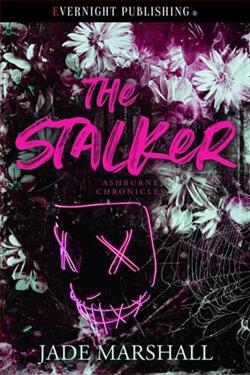Page 69 of X Marks the Stalker
“Please,” he whispers, voice breaking as he stares at the faces surrounding him, his own reflection trapped among them. “I can stop. I’ll never touch another patient.”
“That part is true,” I agree, reaching for the scalpel. “You won’t.”
The mirror reflections cast back multiple versions of myself approaching Wendell, creating an army of exacting shadows.
Wendell’s chest heaves. I’ve removed his coat and shirt for better access. The pale expanse of his skin stretches taut with each panicked breath.
“You’re making a terrible mistake,” he gasps.
I position the scalpel at his left shoulder. “You falsified data in your published research. You experimented on unconsenting patients. You’re responsible for sixteen deaths that were classified as complications.”
The tip of the blade presses against his skin. “But your greatest crime was believing you’d never face consequences.”
The first incision is precise—a diagonal line from his left shoulder downward across his torso toward his right hip. Wendell screams, the sound bouncing off mirrored surfaces, multiplying like his reflections. Blood wells, brilliant crimson against pale flesh.
“Perfect depth,” I observe, studying the parted skin. Not deep enough to damage muscle tissue, just enough to slice through the dermal layer.
I continue with the second cut, beginning at his right shoulder. The scalpel traces diagonally downward, destined to intersect with the first line. Wendell thrashes against the restraints, each movement splashing tiny droplets of blood onto the plastic sheeting. The mirrorscapture his contortions from every angle—his wide eyes darting between reflections, watching himself being marked.
The blade completes its journey across his chest, crossing the first line at his sternum to form a perfect X. I step back, tilting my head to examine my work.
The X stands stark against his skin—not just a mark, but a signature.
“Do you know what this is?” I ask, gesturing at the X now carved into his chest.
“Please,” he sobs. “I’m a father?—”
“I’m signing my work,” I tell him. “I want you to know who’s doing this to you.”
Blood trickles down his torso in thin rivulets, pooling at the waistband of his pants.
“Fascinating thing about pain,” I continue, watching his face contort. “The brain processes it differently when there’s meaning attached. Random suffering feels more acute than pain with purpose.”
The X stands out against his skin.
“But you, Doctor—you understand why this is happening to you.”
I position the doctor’s head in the cranial frame, securing the titanium pins. Three points of contact—two at the temples, one at the forehead—creating the perfect triangle of stability. Just as he does with his patients.
“Don’t worry, I practiced this on a cantaloupe first,” I assure him, adjusting the last pin. “Twice, actually. The first one rolled off the table. Not my finest moment. Turns out, cantaloupes are surprisingly aerodynamic. Who knew? Not me, clearly, or I would have secured it better.”
I push a leather strap between Wendell’s teeth, silencing his protests.
Guttural noises leak through the gag, primal sounds from the lizard brain that knows it’s about to die. The fentanyl-ketamine cocktail works. He’s conscious, aware, but insulated from the full intensity of pain that would send him into shock. Medical marvel, really. The things humans develop to hurt each other more efficiently. We’re a fascinating species. Terrible, but fascinating.
“I’m using the exact pressure you recommend in your paper—forty-five inch-pounds of torque. Enough to prevent movement without fracturing the outer table of the skull.” I test the frame’s stability with a gentle tug. “Perfect.”
The marker feels light between my fingers, its tip squeaking against his skin as I draw the incision line. My handwriting has always been atrocious. My third-grade teacher suggested a career as a doctor just for that reason. Ironic that I’m finally putting her suggestion to use. Though I doubt this particular medical procedure was what she had in mind when suggesting I pursue healthcare.
I unwrap a sterile scalpel, holding it up to catch the light.
“Number fifteen blade. Your preference for the initial scalp incision. Sharper than the eleven, more precise than the twenty-two.” The blade hovers above his head. “Though I imagine you’ve never experienced it from this perspective.”
Blood wells from the incision, bright against his pale skin. I apply pressure with gauze, just enough to clear my field of vision without stopping the procedure.
“You told Anna Petrovich’s son that her memory loss was a progressive symptom of her condition.” I place hemostats along the incision line. “But we both know you damaged herhippocampus deliberately. You wanted to see if your technique could reverse it. Spoiler alert: it couldn’t.”
The skin peels back, revealing the gleaming white of his skull beneath. I reach for the drill, fitting it with the proper burr.















